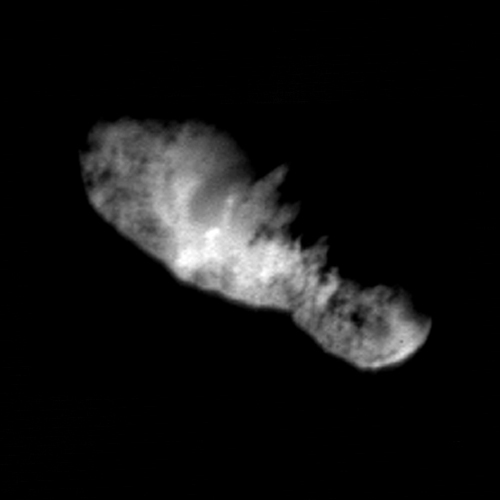2022 February 20
Comet of the month – 19P/Borrelly
This comet has been around for a while but it has only recently moved north of the celestial equator. It is now well-placed for observation from the UK in the evening sky. It is currently 9th magnitude, moving through Aries and it will spend the spring being chased by the evening twilight as it moves through Perseus and Auriga. There is a finder chart here. Images from dark skies, such as the one from Peter Carson below, show a nice tail and our archive here has plenty of images. Since the comet is of short period the archive also contains images from the returns of 2001, 2008, and 2016 and you can see how the comet develops during each apparition.


The comet was discovered by Alphonse Borrelly at the Marseille Observatory on 1904 December 28.86. I think the discovery instrument was his 18.2-cm Eichens comet seeker but I’d be happy to be corrected if anyone has more details. At the time the comet was 9th magnitude with a coma 1-2′ across. The first definitive orbit was calculated by Fayet in 1914. This showed that the comet had a period of 6.91 years. The current orbit has a perihelion distance of 1.35 au and a period of 6.83 years. 19P is one of the few comets that has been visited by a spacecraft. It was imaged by Deep Space 1 on 2001 September 22 from a distance of 3,400 km and the picture shows a nucleus around 8km long shaped like a bowling pin.

The comet was it its closest to the Earth on 2021 December 7 when it was 1.18 au away. It came to perihelion on 2022 February 1 when it was 1.27 au from the Earth and it is now moving away from both the Earth the Sun but fading relatively slowly. It should be brighter than 10th magnitude until mid-March and should be an interesting object to keep under observation until it disappears into the evening twilight in the late spring. You can find the latest lightcurve on COBS here.

| The British Astronomical Association supports amateur astronomers around the UK and the rest of the world. Find out more about the BAA or join us. |
